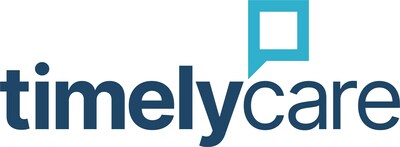Seven in 10 students have considered taking a break or dropping out.
FORT WORTH, Texas, March 12, 2025 /PRNewswire/ -- Mental health struggles and financial pressures are jeopardizing college students' ability to complete their education, according to a new study by TimelyCare, higher education's most trusted virtual health and well-being provider,
The survey, which gathered responses from 740 students attending two- and four-year colleges across the U.S., exposes significant barriers to student success and calls for specific action by educational institutions to address pressing concerns.
Key Findings:
Students at Risk of Stopping - More than half (53%) of current college and university students said they had considered taking a break from school, and 17% considered dropping out and not returning.
Financial Strain - Nearly one-third (31%) of respondents cited financial strain as a primary reason for considering withdrawal. Additionally, a significant portion of students reported relying on a combination of financial aid, scholarships, and part-time or full-time work to cover costs.
Success Barriers - An overwhelming 95% identified at least one obstacle impacting their success. Mental health (53%) and finances (49%) were the top challenges, followed by physical health (33%), academics (28%) and social belonging (26%).
Gaps in Support Access - While 90% of students had used at least one school-provided resource such as academic advising, tutoring, or mental health counseling, issues like lack of awareness, inconvenient office hours, and inaccessible locations kept many from getting the needed help.
Success Defined
Students identified GPA, gaining knowledge,
and graduating or completing their coursework as their top measures of
success in line with a 2024 survey. Interestingly, non-traditional students placed graduating and gaining knowledge above GPA.
"This study makes it crystal clear that many students are slipping through the cracks due to unmet financial, academic, and emotional needs," said Nicole Guerrero Trevino, PhD, Vice President for Student Success, TimelyCare. "Our institutions must rise to the occasion to ensure no student is left behind."
What Can Be Done?
In an open-ended question, students identified several ways institutions can better support their success, including:
Promoting Awareness of Resources: Students called for more
accessible and transparent communication about resources like tutoring,
counseling, and career services.
"Make a comprehensive list of all resources in one place."
"Talk about these services more openly. I didn't know they existed when I needed them."
Tailoring Support for Non-Traditional and First-Generation Students: Develop
targeted programs and policies, such as childcare options and
evening/online classes, to support students balancing multiple roles.
"Offer different hours for people who work full time during regular work hours."
Engaging Faculty and Staff: Train educators and advisors to proactively identify struggling students and provide personalized support.
"Make
it feel more normal that all students are impacted in some way and
encourage all students to look into getting the help they need. It still
feels almost taboo to seek out help in most situations."
Expanding Mental Health and Financial Well-Being Resources: Increase
counseling availability, destigmatize mental health challenges, and
offer virtual and flexible options for access. Streamline communication
about scholarships, grants, and emergency funding while providing robust
financial literacy resources.
"Give access to virtual services or anonymous services"
TimelyCare virtual success coaching supplements on-campus academic preparedness, career readiness, and financial wellness support with an integrated 1:1 care and coaching model.
A complete list of questions and responses from the February 2025 survey may be found here. Click here to download a related infographic.
About TimelyCare
TimelyCare
is the most trusted virtual health and well-being solution for learning
communities, offering personalized, clinically proven care that fosters
student success and delivers life-changing outcomes. With an unmatched
range of service options on one seamless, easy-to-access platform,
including mental health counseling, on-demand emotional support, medical
care, psychiatric care, health coaching, success coaching, basic needs
assistance, faculty and staff guidance, peer support and self-guided
wellness tools, we extend the efforts of 400+ campus wellness teams,
ensuring millions of students have direct, anytime access to our
culturally competent and diverse care providers. Recognized as a
Princeton Review Top 5 Need to Know Organization for Mental Health
Awareness, TimelyCare drives measurable and meaningful improvements in
depression and anxiety, empowering every student on their wellness
journey while strengthening learning environments.











